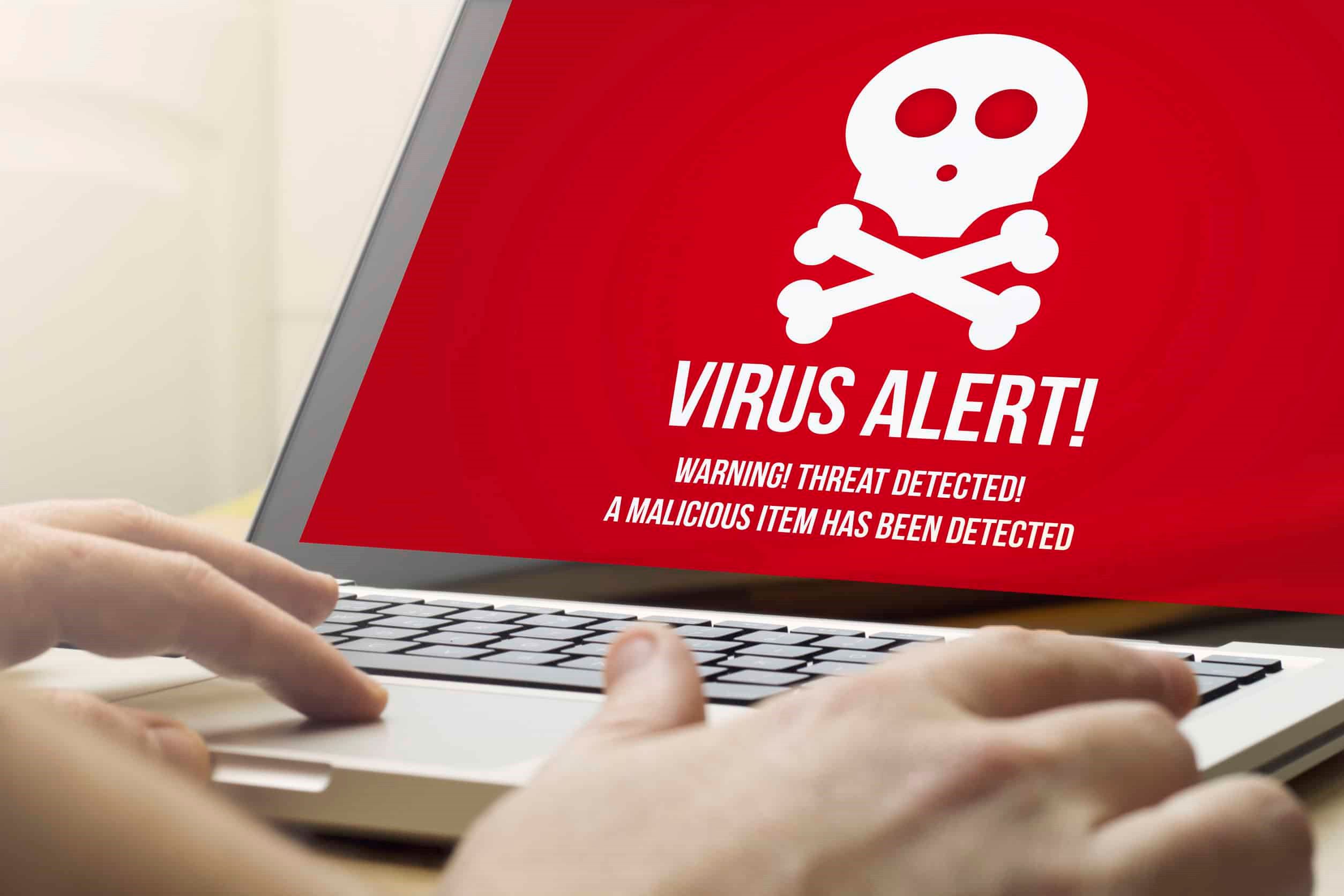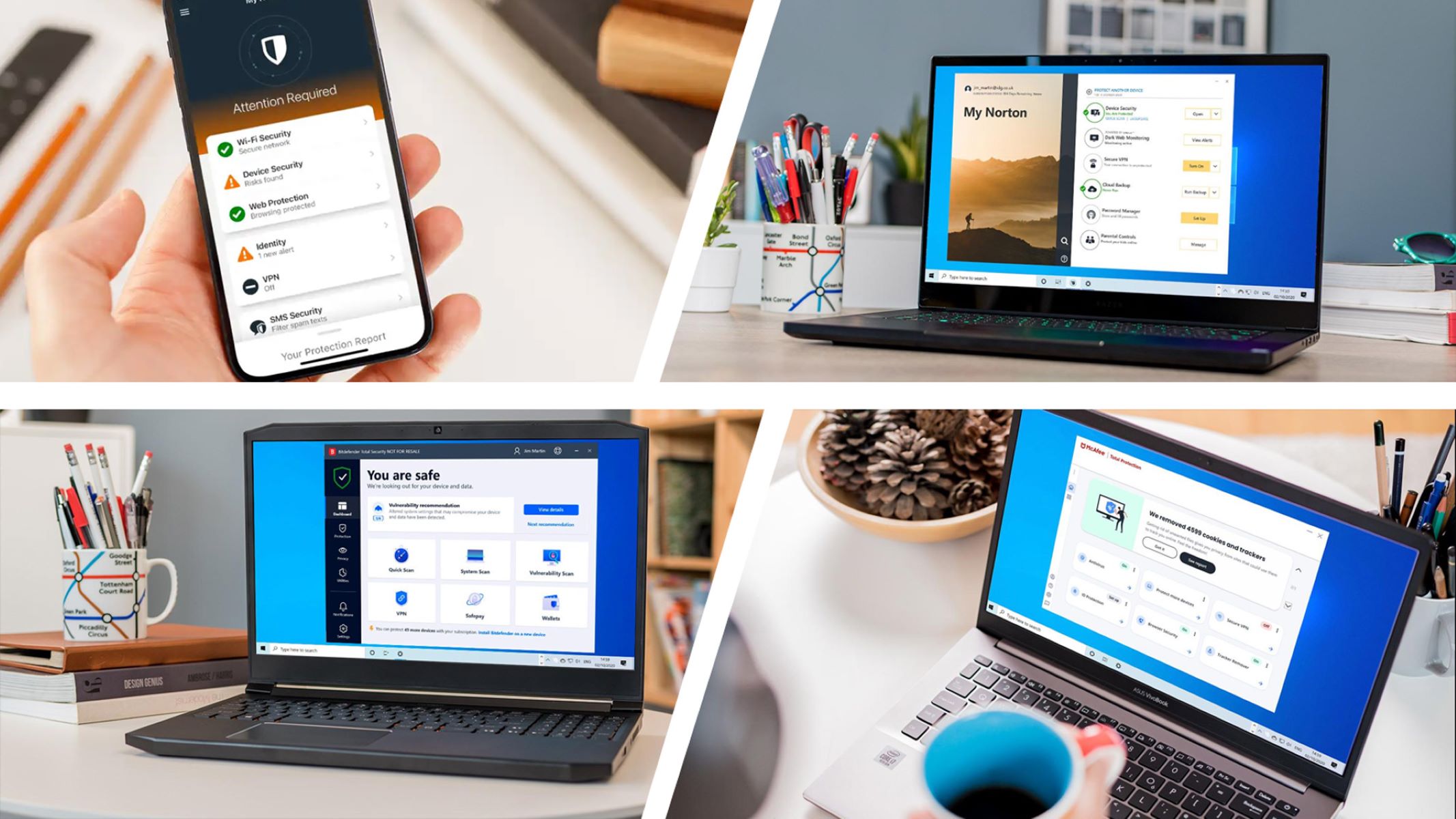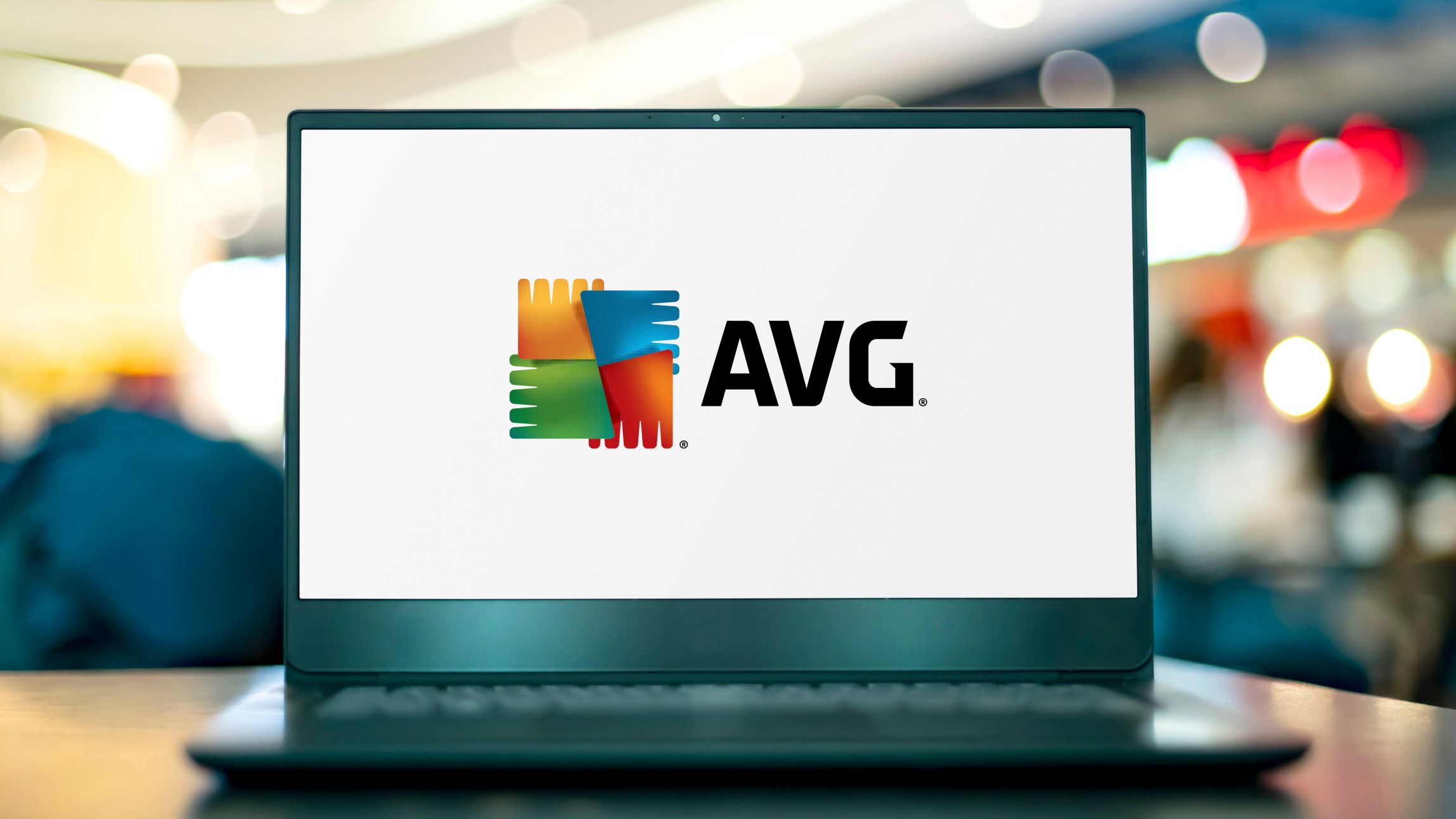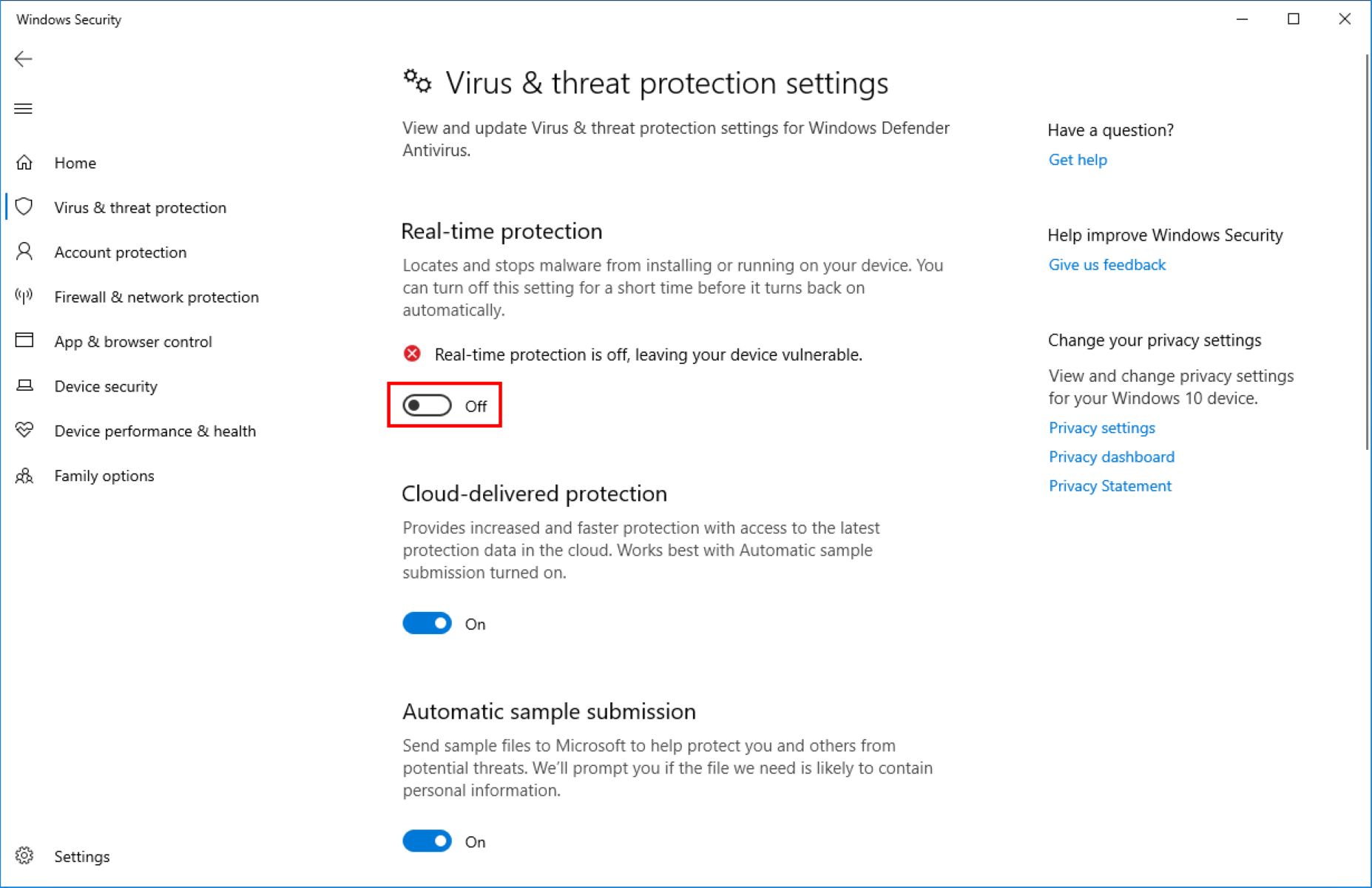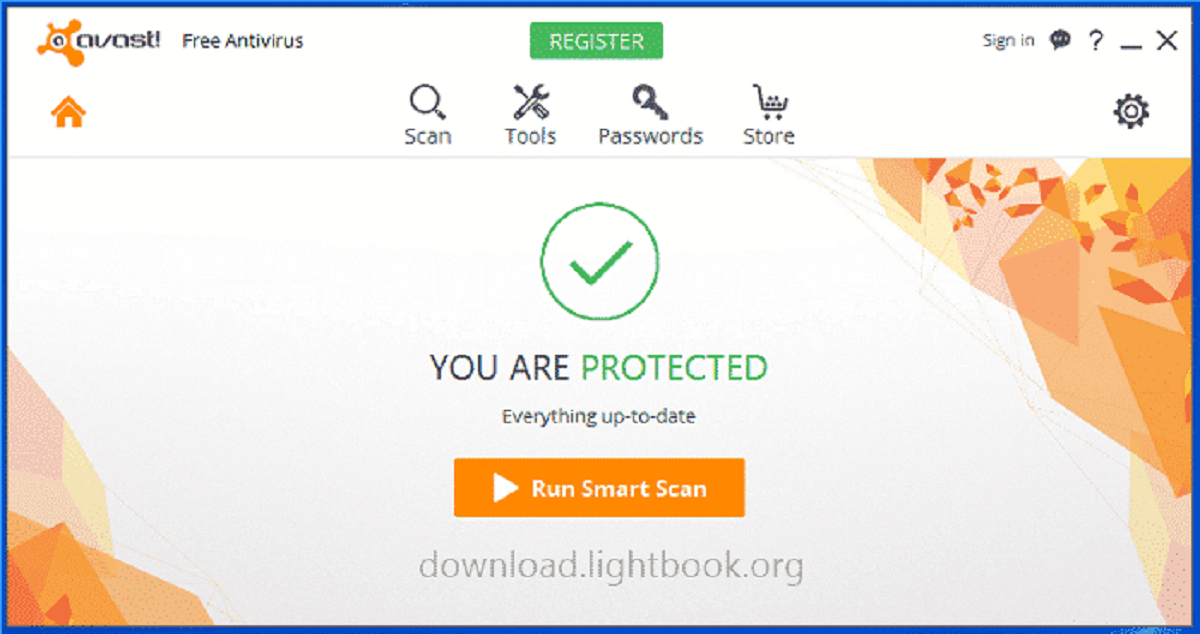Introduction
Welcome to the world of antivirus software development! In today’s digital age, protecting our computers and devices from various threats is of utmost importance. Whether it’s malware, viruses, or other malicious software, having a reliable antivirus solution can safeguard our sensitive data and ensure the smooth functioning of our systems.
In this comprehensive guide, we will explore the process of creating your very own antivirus software from scratch. We will dive deep into the intricacies of designing and developing the key components that make up a robust antivirus solution, giving you the knowledge and skills needed to embark on this exciting journey.
Before we dive into the technical aspects, let’s take a moment to understand what antivirus software is and why it is essential. Antivirus software is a program designed to detect, prevent, and remove malicious software from a computer or device. Its primary function is to scan files, documents, and applications for known threats and neutralize them, ensuring the security and integrity of the system.
With the rise in cyber threats and the constantly evolving nature of malware, having a reliable antivirus solution has become a necessity. Traditional signature-based detection methods have paved the way for more advanced techniques, such as behavior-based analysis, machine learning, and heuristics, all aimed at detecting and mitigating complex threats effectively.
Developing an antivirus program requires a combination of programming skills, security knowledge, and an understanding of system internals. Throughout this guide, we will provide step-by-step instructions and insights into each stage of the development process, empowering you to create a powerful and efficient antivirus solution.
It’s important to note that creating an antivirus software is not a trivial task. It involves understanding various programming languages, such as C++, C#, or Java, depending on the platform you choose to develop for. Additionally, you need to be familiar with concepts such as file scanning, threat detection algorithms, virus definitions, and update mechanisms.
Through this comprehensive guide, we will cover all the essential components of an antivirus program, including the user interface, antivirus engine, real-time scanner, quarantine system, scheduled scans, whitelist and exclusion system, and update mechanism. By the end of this journey, you’ll have the knowledge and skills to develop your very own antivirus software, tailored to your specific needs.
So, let’s get started on this exciting adventure of creating an antivirus software that will protect computers and devices from the ever-growing range of cyber threats.
Understanding Antivirus Software
Before diving into the development process of antivirus software, it is essential to have a solid understanding of what antivirus software is and how it works. Antivirus software is a program designed to detect, prevent, and remove malicious software from a computer or device. Its primary goal is to protect the system from malware, viruses, worms, Trojans, ransomware, and other malicious threats.
Antivirus software utilizes various techniques and technologies to identify and neutralize threats. One of the most common techniques is signature-based detection, where the antivirus software scans files and compares them against a database of known malware signatures. If a match is found, the software takes appropriate action to prevent the threat from executing or spreading.
However, relying solely on signatures is not enough to combat the ever-evolving landscape of malware. To overcome this limitation, modern antivirus software uses additional detection methods like behavior-based analysis and machine learning. Behavior-based analysis monitors the activities and behaviors of files and applications, looking for suspicious or malicious actions. Machine learning techniques leverage algorithms to analyze patterns and classify files based on their likelihood of being malicious.
Another crucial aspect of antivirus software is the real-time scanning feature. This feature continuously monitors the system for any suspicious activity, scanning files and processes as they are accessed. Real-time scanning provides a proactive defense against threats, instantly detecting and blocking any malicious activity in real-time. Additionally, antivirus software also incorporates quarantine systems, which isolate detected threats to prevent them from spreading further.
In addition to scanning and detection capabilities, antivirus software often includes other essential features, such as scheduled scans, a whitelist, and an exclusion system. Scheduled scans allow users to set up automatic scans at specific intervals, ensuring that the system is regularly checked for any potential threats. The whitelist and exclusion system allow users to specify trusted files, applications, or directories that are excluded from scans, preventing false positives from occurring.
To ensure the effectiveness of an antivirus program, regular updates are crucial. Updating the antivirus software and its virus definitions database is vital to keep up with new malware variants and emerging threats. Many antivirus solutions implement an automatic update mechanism that ensures users are always equipped with the latest protection.
Understanding these fundamental concepts of antivirus software is essential before embarking on the development journey. It lays the groundwork for building a robust and efficient antivirus solution that can effectively protect computers and devices from the constant threats in the digital landscape.
Setting Up the Development Environment
Before we start developing our antivirus software, it is crucial to set up a suitable development environment. The development environment encompasses the software, tools, and libraries necessary for coding, testing, and debugging our program. Having a well-configured development environment ensures a smooth and efficient development process.
The choice of development tools may vary depending on the programming language and platform you have selected for building your antivirus software. Here are some essential steps to set up a basic development environment:
- Selecting a Programming Language: Choose a programming language that you are comfortable with and supports the platforms you intend to develop for. Common programming languages for antivirus software development include C++, C#, and Java.
- IDE (Integrated Development Environment): Choose an IDE that provides a comprehensive set of tools and features to facilitate coding, testing, and debugging. Popular choices include Visual Studio for C++ and C#, Eclipse for Java, or any other IDE that suits your preference.
- Version Control System: Setting up a version control system is essential to manage your source code effectively. Git is a widely-used version control system that allows multiple developers to collaborate on the project and keep track of changes over time.
- Dependency Management: Depending on the specific requirements of your antivirus software, you may need to incorporate third-party libraries or frameworks. Use a dependency management tool, such as NuGet for C# or Maven for Java, to simplify the process of adding and managing external dependencies.
- Testing Tools: Include unit testing frameworks, such as NUnit for C# or JUnit for Java, to ensure the reliability and stability of your antivirus software. These tools help to automate the testing process and identify any bugs or issues early on.
- Build and Deployment: Set up a build system, such as MSBuild for C# or Ant for Java, for automating the compilation and packaging of your software. This will streamline the process of generating the executable files and prepare them for deployment on various platforms.
Additionally, it is important to keep your development environment up to date with the latest software updates, patches, and security fixes. This ensures that you are working with the most stable and secure versions of the tools and libraries you are using.
By investing time in setting up a well-structured development environment, you can streamline your development process, enhance productivity, and effectively manage your codebase. This foundation will lay the groundwork for building a robust antivirus software solution.
Creating the User Interface
The user interface (UI) of an antivirus software plays a crucial role in providing a user-friendly and intuitive experience. It allows users to interact with the antivirus program, access its features, and monitor the security status of their system. Creating a well-designed and visually appealing UI is essential to ensure the usability and effectiveness of the antivirus software.
Here are some key considerations and steps for designing and creating the user interface:
- Identify User Requirements: Understand the needs and expectations of your target audience. Consider factors such as simplicity, clarity, and ease of use. Determine the essential features and functionalities your antivirus software should provide.
- Design Layout and Navigation: Create a clear and consistent layout for your UI. Decide on the placement of various elements such as scan buttons, settings menus, and status indicators. Organize the UI in a logical manner, ensuring easy navigation for users.
- Choose a Visual Theme: Select an appropriate color scheme and visual theme that complements the purpose of the antivirus software. Consider using color coding to represent different threat levels or status information to provide users with clear visual cues.
- Create Intuitive Controls: Use standard controls such as buttons, checkboxes, and dropdown menus to ensure familiarity for users. Group related controls together and provide clear and concise labels to avoid confusion.
- Implement Real-Time Status Updates: Display real-time information about the system’s security status, scan progress, and any detected threats. This helps users stay informed about the protection status of their system and builds trust in the antivirus software.
- Provide Customization Options: Consider incorporating customization options that allow users to personalize their antivirus software experience. This may include the ability to customize scan schedules, exclude specific files or folders from scans, or modify alert settings.
- Ensure Responsiveness: Design the UI to be responsive and adaptable to different screen sizes and resolutions. This ensures that the antivirus software can be used effectively on various devices, including desktop computers, laptops, and mobile devices.
Once the design phase is complete, you can begin implementing the user interface using the programming language and tools of your choice. Utilize the libraries and frameworks available to simplify the development process and enhance the UI’s functionality.
Keep in mind that user feedback is invaluable during this stage. Regularly test the UI with a group of users and gather their feedback to identify any usability issues or areas for improvement. Incorporate user feedback into your design and iterate on the UI based on the insights you gather.
By focusing on creating an intuitive and visually appealing user interface, you can enhance the overall user experience and make your antivirus software more accessible and user-friendly.
Designing the Antivirus Engine
The heart of any antivirus software is its antivirus engine. The antivirus engine is responsible for detecting and mitigating malware threats, ensuring the security and integrity of the system. The design of the antivirus engine plays a crucial role in the effectiveness and efficiency of the antivirus software. In this section, we will explore the key steps and considerations for designing a robust antivirus engine.
Here are some important factors to consider when designing the antivirus engine:
- Threat Detection Techniques: Determine the techniques and algorithms you will employ to detect malware threats. This may include signature-based detection, behavior-based analysis, machine learning, or a combination of these approaches. Choose the techniques that align with your objectives and the capabilities of the programming language and libraries you are using.
- Scanning Mechanism: Design a scanning mechanism that efficiently scans files, documents, and applications for potential threats. Consider factors such as scan time, resource consumption, and the balance between accuracy and performance. Implement scanning methods that allow for quick and comprehensive analysis of files while minimizing false positives.
- Heuristics: Incorporate heuristics to improve the detection of unknown or previously unseen malware. Heuristics analyze file behavior, code structure, and other patterns to identify potential threats. Strike a balance between aggressive heuristics that detect new threats and conservative heuristics that minimize false positives.
- Quarantine and Removal: Design a mechanism to quarantine and remove identified threats from the system. Ensure that the antivirus software effectively isolates and neutralizes threats, preventing them from spreading or causing harm to the system and user data. Implement a secure and reliable quarantine system that allows for easy restoration of false positives.
- Virus Definitions: Consider the mechanism for updating the antivirus software’s virus definitions database. Regularly update the virus definitions to ensure the antivirus engine can detect the latest malware variants. Implement an update mechanism that securely retrieves and applies virus definition updates.
- Optimization and Performance: Optimize the antivirus engine to minimize resource consumption and maximize performance. Utilize efficient data structures and algorithms to ensure quick scanning and detection. Consider multi-threading or parallel processing to take advantage of modern multi-core processors and enhance scanning speed.
It’s important to note that designing an effective antivirus engine requires a deep understanding of malware behavior, programming concepts, and security practices. Conduct extensive research and stay updated with the latest advancements in malware detection techniques to ensure that your antivirus engine remains effective against emerging threats.
As you design the antivirus engine, remember to keep it modular and scalable. This allows for future enhancements and additions as the malware landscape evolves. Incorporate logging and error handling mechanisms to facilitate debugging and troubleshooting.
By carefully designing the antivirus engine, you can create an efficient and powerful defense against malware threats, ensuring the security and peace of mind of the user.
Developing the Real-Time Scanner
A crucial component of any antivirus software is the real-time scanner. The real-time scanner continuously monitors the system for potential threats, scanning files and processes as they are accessed. Developing an effective and efficient real-time scanner is essential for providing real-time protection against malware. In this section, we will explore the key steps and considerations for developing a robust real-time scanner.
Here are some important factors to consider when developing the real-time scanner:
- Monitoring System Activities: Implement a mechanism to monitor system activities and identify file accesses, process launches, and network communication. This allows the real-time scanner to detect potential threats as they occur in real-time.
- File and Process Scanning: Design a scanning mechanism that efficiently scans files and processes for potential malware. Utilize the scanning techniques and algorithms selected during the antivirus engine design phase. Implement a balance between speed and accuracy, ensuring that the real-time scanner can quickly detect threats while minimizing false positives.
- Memory Scanning: Incorporate memory scanning capabilities to detect malware that may reside in the system’s RAM. Implement techniques such as process memory scanning and code injection detection to efficiently identify and neutralize threats present in active processes.
- Behavioral Analysis: Integrate behavioral analysis techniques to identify and block suspicious or malicious activities. Develop heuristics that analyze file behavior, code execution patterns, and network communication to detect potential threats before they can cause harm to the system.
- Real-Time Notifications: Implement a notification system to alert the user when a potential threat is detected in real-time. Clearly convey the type of threat, severity level, and recommended actions to the user, enabling them to take immediate steps to mitigate the threat.
- Performance and Resource Optimization: Optimize the real-time scanner to minimize system resource consumption while ensuring efficient scanning. Utilize techniques such as multi-threading or background processing to perform scans without impacting system performance.
- Integration with System: Integrate the real-time scanner with the operating system to ensure seamless and continuous protection. Hook into system APIs or use system-level monitoring mechanisms to effectively detect and respond to potential threats.
- Regular Updates: Regularly update the real-time scanner’s virus definitions and behavior analysis rules to remain effective against the latest malware threats. Implement an update mechanism that securely retrieves and applies the updates, keeping the real-time scanner up-to-date.
Throughout the development process, rigorous testing and quality assurance are crucial. Test the real-time scanner in various scenarios, including different file types, system activities, and network environments, to ensure its accuracy, reliability, and compatibility.
By carefully developing the real-time scanner, you can provide users with continuous protection against malware threats in real-time, ensuring the security and integrity of their systems.
Implementing Quarantine System
As a crucial component of an antivirus software, the quarantine system is responsible for isolating and containing detected malware to prevent further harm to the system and user data. Implementing an effective and reliable quarantine system is essential to safeguard the integrity and security of the system. In this section, we will explore the steps and considerations involved in implementing a robust quarantine system.
Here are some key factors to consider when implementing a quarantine system:
- Quarantine Action: Decide on the appropriate action to take when malware is detected, such as moving the infected file to a quarantine folder or isolating it in a specific location. Consider the implications of each action, such as the potential impact on system performance and the risk of false positives.
- Secure Isolation: Design a mechanism to securely isolate and restrict access to the quarantined files. Implement measures to prevent the malware from escaping the quarantine and infecting the system. This may involve using file system permissions or encryption to protect the quarantined files.
- Quarantine Management: Develop a user-friendly interface that allows users to view and manage quarantined items. Provide options for restoring files from quarantine, permanently deleting them, or submitting them for further analysis. Ensure that the quarantine management system is intuitive and efficient.
- False Positive Handling: Implement a process to handle false positive detections. Allow users to exclude certain files, directories, or applications from quarantine to prevent legitimate software from being wrongly flagged as malicious. Implement a user-friendly interface to manage exclusion lists and provide clear instructions for restoring excluded files.
- Quarantine Reporting: Generate comprehensive reports on quarantined files, including details such as file name, detection date, and threat information. Provide users with the ability to export or review the reports for auditing or analysis purposes. Ensure that the reporting system is accurate, organized, and easily accessible.
- Periodic Scans and Release: Develop a mechanism to periodically scan the quarantined files for any changes or updates. This helps identify any evolving threats or potential false positives that may have been mistakenly quarantined. Implement an automatic release process to restore clean files that are no longer considered a threat.
Throughout the implementation of the quarantine system, focus on security and reliability. Utilize encryption, access control, and secure storage mechanisms to protect quarantined files from unauthorized access or accidental release. Regularly test the quarantine system’s functionality and effectiveness to ensure it operates as intended.
Additionally, consider the impact of the quarantine system on the performance and storage space of the system. Optimize the quarantine system to minimize resource consumption while ensuring that it effectively isolates and contains detected malware.
By implementing a robust quarantine system, you can efficiently manage and neutralize detected malware threats, safeguarding the system and user data from potential harm.
Adding Scheduled Scans
Implementing scheduled scans is an essential feature in antivirus software that allows users to automatically scan their systems at predefined intervals. Scheduled scans provide a proactive approach to maintaining the security and integrity of the system by regularly checking for potential malware threats. In this section, we will explore the steps and considerations involved in adding scheduled scans to your antivirus software.
Here are some key factors to consider when adding scheduled scans:
- Scan Frequency: Determine the frequency of the scheduled scans based on user preferences and system usage patterns. Consider factors such as system performance impact and user convenience. Common options include daily, weekly, or custom-defined schedules.
- Scanning Scope: Provide users with the ability to select the scope of the scheduled scans, such as scanning specific drives, folders, or file types. Consider including options for full system scans, quick scans, or custom scans to accommodate various user needs.
- Customization Options: Allow users to customize scheduled scans according to their preferences. Include options to set specific scan times, exclude certain files or folders from scans, or adjust the level of scan aggressiveness. Provide clear instructions and guidance to ensure users can configure the scheduled scans effectively.
- Idle Time Scans: Implement the ability to perform scheduled scans during system idle periods. This minimizes the impact on system performance and ensures that scans are completed efficiently without interrupting user activities.
- Automatic Updates: Integrate automatic update mechanisms to keep the antivirus software and virus definitions database up to date before each scheduled scan. This ensures that the scans are performed using the latest protection and detection capabilities.
- Logging and Notifications: Record comprehensive logs of scheduled scan activities, including scan date, time, duration, and any detected threats. Provide options for users to review the scan results and access detailed reports. Additionally, implement notification mechanisms to alert users of completed scans and any detected threats.
- Performance Optimization: Optimize scheduled scans to minimize resource consumption and impact on system performance. Employ scanning techniques that balance accuracy and speed to ensure efficient scans within the specified time frame. Utilize multi-threading or background processing to perform scans without causing noticeable slowdowns for users.
Throughout the development of scheduled scans, focus on providing a seamless user experience. Ensure that the scheduled scans can be easily set up, modified, or disabled, allowing users to have full control over the scanning schedule. Consider providing recommendations and best practices to guide users in selecting appropriate scan settings.
Regularly test the scheduled scan functionality in various scenarios to ensure its reliability and effectiveness. Verify that scans are executed according to the specified schedule, and detected threats are appropriately handled and reported to the user.
By adding scheduled scans to your antivirus software, you empower users to take a proactive approach to their system’s security, ensuring regular and automatic scans to detect and neutralize potential malware threats.
Building a Whitelist and Exclusion System
Building a whitelist and exclusion system is an important feature in antivirus software that allows users to customize their protection settings and exclude trusted files, applications, or directories from scans. This system helps prevent false positives and allows users to maintain the normal functioning of their system without unnecessary interruptions. In this section, we will explore the steps and considerations involved in building a robust whitelist and exclusion system for your antivirus software.
Here are some key factors to consider when building a whitelist and exclusion system:
- User-Defined Exclusions: Design the system to allow users to exclude specific files, applications, or folders from scans. Provide a user-friendly interface that enables users to add, remove, or modify the list of exclusions. Clearly communicate the impact of excluding certain items and guide users on making informed decisions.
- Default Exclusions: Consider including default exclusions for commonly trusted files and directories, such as system files or well-known applications. This reduces the chance of false positives and prevents unnecessary warnings or actions on trusted items.
- Exclusion Criteria: Define criteria for exclusions based on file types, file paths, or other attributes. Allow users to specify exclusion patterns using wildcards or regular expressions to exclude groups of related files.
- Scan Customization: Integrate the whitelist and exclusion system with the scanning mechanism to ensure that excluded items are not included in the scan process. Optimize the scanning logic to bypass excluded files efficiently, reducing scan times and resource consumption.
- Exclusion Persistence: Implement a mechanism to persist exclusions across software updates and system restarts. This ensures that user-defined exclusions are retained and continue to be effective, even after system changes or antivirus software updates.
- Validation and Auditing: Validate and verify exclusions to minimize the risk of abuse or security vulnerabilities. Implement auditing capabilities to track changes made to the whitelist and exclusion system and provide reports or logs for accountability and analysis.
- Education and Best Practices: Educate users on the importance of judiciously using the whitelist and exclusion system to maintain security. Provide clear instructions and best practices for selecting exclusions and guide users in making informed decisions.
Throughout the development of the whitelist and exclusion system, emphasize user experience and simplicity. Ensure that the interface for managing exclusions is intuitive and easy to navigate. Clearly communicate the purpose and impact of exclusions to users and provide tooltips or explanatory notes to assist them.
Regularly test the whitelist and exclusion system to verify its functionality and effectiveness. Ensure that excluded items are successfully bypassed during scans and that the system provides appropriate warnings or notifications when excluded items are accessed or modified.
By building a robust whitelist and exclusion system, you empower users to tailor their antivirus protection to their specific needs and minimize disruptions caused by false positives, ensuring a smoother and more efficient computing experience.
Designing the Update Mechanism
An effective update mechanism is a crucial component of any antivirus software, ensuring that the software remains up to date with the latest virus definitions and security patches. Designing a reliable and efficient update mechanism is essential to maintain the effectiveness of the antivirus software and protect users from the constantly evolving landscape of malware threats. In this section, we will explore the steps and considerations involved in designing an update mechanism for your antivirus software.
Here are some key factors to consider when designing the update mechanism:
- Automatic Updates: Implement automatic updates to ensure that the antivirus software regularly checks for updates and applies them without requiring user intervention. Automatic updates establish a seamless and proactive approach to keeping the software up to date with the latest protection.
- Secure Communication: Establish secure communication channels between the antivirus software and the update server to safeguard the integrity and authenticity of the downloaded updates. Utilize encryption and digital signatures to prevent tampering or unauthorized access to the updates.
- Update Frequency: Determine the frequency of update checks based on the urgency and availability of new virus definitions or software patches. Strike a balance between timely updates and minimizing network congestion or resource consumption.
- Incremental Updates: Implement an incremental update mechanism to reduce the size of updates and the network bandwidth required. Instead of downloading the entire virus definitions database in each update, only download the changes since the last update. This optimizes the update process while ensuring comprehensive protection.
- Offline Update Support: Consider providing offline update options for situations where an internet connection is not available or feasible. Users should be able to download updates manually from a trusted source and apply them to the antivirus software offline.
- Update Notifications: Notify users when updates are available and provide clear information on the importance of the updates. Implement reminders or prompts to ensure that users stay up to date with the latest protection.
- Rollback Mechanism: Design a rollback mechanism that allows users to revert to the previous version of the antivirus software in case an update causes compatibility issues or unforeseen problems. This provides an additional level of flexibility and control for users.
- Reporting and Logging: Capture and log details about the update process, including the update status, timestamp, and any errors or warnings encountered. This information helps in troubleshooting and provides an audit trail for update activities.
Additionally, consider the user experience and simplicity when designing the update mechanism. Optimize the update process to be minimally intrusive and clearly communicate the progress and outcome of the update to users.
Regularly test the update mechanism to ensure its reliability and effectiveness. Verify that updates are downloaded and applied correctly, and the antivirus software remains up to date with the latest virus definitions and security patches.
By designing a robust update mechanism, you ensure that your antivirus software remains resilient against emerging threats and provides users with the highest level of protection against malware.
Testing and Debugging the Antivirus
Thorough testing and debugging are critical stages in the development of an antivirus software to ensure its functionality, reliability, and effectiveness. Proper testing helps identify and fix bugs, verify the accuracy of detection mechanisms, and validate the overall performance of the antivirus software. In this section, we will explore the steps and considerations involved in testing and debugging your antivirus software.
Here are some key factors to consider when testing and debugging the antivirus:
- Test Plan: Develop a comprehensive test plan that outlines the test cases and scenarios to be evaluated. Include both positive and negative test cases, covering different file types, sizes, and known malware samples. Test various functionalities, including scanning, real-time protection, quarantine, and update mechanisms.
- Test Environment: Create a controlled test environment that closely mimics real-world usage conditions while ensuring the integrity and safety of the testing infrastructure. Use virtual machines or isolated systems to prevent any unintended impact on production environments.
- Functional Testing: Perform functional testing to ensure that all components of the antivirus software are working as expected. Verify that scans detect malware, the real-time protection effectively blocks threats, and the quarantine system isolates threats without causing unintentional side effects.
- Performance Testing: Evaluate the performance of the antivirus software under stress conditions to ensure that it can handle high-volume scans efficiently. Measure scanning speed, resource utilization, and the impact on system performance during various operations.
- Compatibility Testing: Verify the compatibility of the antivirus software with different operating systems, hardware configurations, and software applications. Test it with different versions of the operating system to ensure compatibility across a wide range of environments.
- Regression Testing: Conduct regression testing after bug fixes or updates to ensure that changes or new features do not negatively impact the existing functionalities. Re-run previously passed test cases to verify that they still function correctly.
- Security Testing: Conduct extensive security testing to identify any vulnerabilities or weaknesses in the antivirus software. Perform penetration testing, code review, and vulnerability scanning to ensure that the software is resistant to attacks and maintains the privacy of user data.
- Debugging and Issue Tracking: Use debugging tools and techniques to track down and resolve any issues encountered during testing. Implement an issue tracking system to record and document any bugs, errors, or unexpected behaviors, allowing for efficient communication and resolution of problems.
Throughout the testing and debugging process, maintain thorough documentation of the tests performed, the results obtained, and any fixes or adjustments made. This documentation serves as a reference for future improvements and can help guide the resolution of potential issues.
Conduct rigorous testing not only during the development phase but also during subsequent updates and releases. Regularly update test cases and scenarios to adapt to the evolving threat landscape and to ensure ongoing verification of the antivirus software’s effectiveness.
By investing time and effort in testing and debugging, you can ensure that your antivirus software is robust, efficient, and capable of providing reliable protection against malware threats.
Conclusion
Congratulations on completing this comprehensive guide to developing your own antivirus software! Throughout this journey, we have explored the essential components and considerations for creating a powerful and efficient antivirus solution. From understanding antivirus software and setting up the development environment to designing the user interface, antivirus engine, real-time scanner, quarantine system, scheduled scans, whitelist and exclusion system, update mechanism, and testing and debugging, you have gained valuable insights into the intricacies of antivirus software development.
Developing an antivirus software requires a combination of programming skills, security knowledge, and an understanding of system internals. By following the steps outlined in this guide, you have acquired the foundational knowledge and skills needed to embark on this exciting venture.
Remember that antivirus software development is an ongoing process. The threat landscape is constantly evolving, and new malware variants and attack vectors emerge regularly. Stay informed about the latest advances in malware detection techniques and security best practices to ensure that your antivirus software remains effective and updated.
As you continue on your journey of antivirus software development, keep in mind the importance of usability and user experience. Strive to create a user-friendly interface that simplifies the management and customization of the antivirus software. Regularly seek user feedback and engage in continuous improvement to enhance the effectiveness and user satisfaction of your antivirus solution.
Finally, always prioritize the security and integrity of the systems and data that your antivirus software protects. Implement industry-standard practices for secure development, regularly update your software, and ensure rigorous testing and debugging to identify and address any vulnerabilities or weaknesses that may arise.
With your newfound knowledge and skills, you are now equipped to develop an antivirus software tailored to your specific needs and the needs of your users. Embrace the exciting challenges that lie ahead and seize the opportunity to contribute to the ongoing fight against malware and cyber threats.







